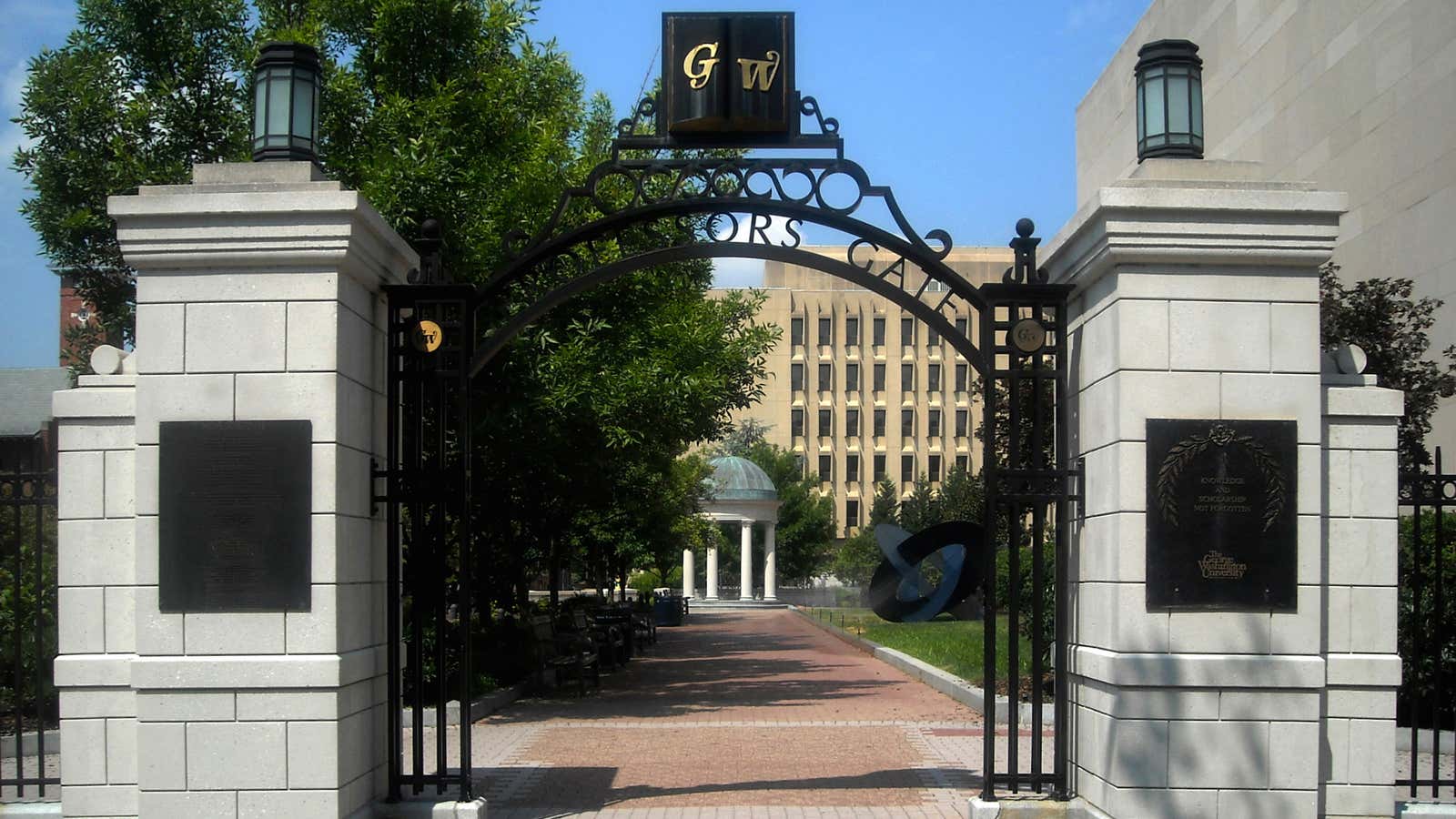This post has been updated.
George Washington University will no longer require undergraduate applicants to submit standardized test scores, starting August 1, 2015. With over 10,000 undergraduate students and a #54 ranking on the U.S. News and World Report’s list of national universities, the school is one of the largest and most prestigious in the US to adopt this policy.
This strategic revision was announced July 27, after the university accepted 45% of undergraduate applicants for the class of 2019, its highest acceptance rate since 2010.
An article published by GW’s official news site claims that undergraduate success at the university can be predicted by the average of an applicant’s high school grades, or GPA. Along with students’ high school achievements, extra-curricular activities and recommendations, GPA will guide “GW’s holistic review process” going forward, the article reports.
In the same article, Laurie Koehler, senior associate provost for enrollment management and co-chair of GW’s Access and Success committee, gave another reason for making standardized testing optional:
“The test-optional policy should strengthen and diversify an already outstanding applicant pool and will broaden access for those high-achieving students who have historically been underrepresented at selective colleges and universities, including students of color, first-generation students and students from low-income households.”
But without an increase in financial aid, this statement falls on deaf ears. The university’s official website lists the average on-campus tuition as $66,660 a year, making it one of, if not the most, expensive colleges in the US.
Update: A media representative for the school told Quartz that a fundraising campaign has been launched to raise$1 billion for the university. Some of the funds raised will be dedicated to financial aid. Budget reports from the past two years show that the university increased financial aid from $233 million in the 2015 fiscal year to $260 million in 2016.
To collect more tuition dollars, GW intends to increase enrollment in years to come, according to a university administrator’s statement in an April 2015 report by GW Hatchet, an independent student newspaper. To increase enrollment, GW must accept more students.
But high acceptance goals are dangerous for GW’s reputation. Among US universities, low acceptance rates, or selectivity, are commonly considered a mark of prestige. And in the vicious cycle of competitive college admissions, the lower the acceptance rate, the more students want in, and the more students want in, the more students apply, further lowering the acceptance rate.
GW has gamed this system in the past.
In 2012, the school was accused of inflating the high school rankings of their incoming freshman class. “The University mistakenly overreported the percentage of freshmen that graduated in the top 10 percent of their high school class by up to 20 percent,” the Hatchet reported. The misrepresentation reached back almost a decade, officials stated at the time. University officials claimed plausible deniability in this case, reporting it as a computation error.
Koehler, who was hired to clean up the admissions department following this incident, found another troubling inconsistency when she took office in March 2013, according to the Hatchet.
She found that GWU admissions officers had claimed their admissions process was “need blind” when, in fact, applicants’ ability to pay did—and does—factor into their admission decision.
This came out in October 2013, amid Koehler’s attempts to quietly set the record straight. “Up to 10% of GW’s roughly 22,000 applicants each year” were waitlisted due to their inability to pay the full price of a GW education, the Hatchet reported at the time.
It seems Koehler may be digging GW back into a hole with her comment on the new admissions policy. While not technically a lie, her claim that the new admissions policy is aimed at increasing socio-economic diversity in the student body is misleading, when students are currently being turned away based on their ability to pay.
Eliminating the testing requirement will likely increase the number of applicants—both rich and poor. But unless the university significantly increases financial aid, this policy will do little more than lower GW’s acceptance rate.
We welcome your comments at [email protected].
Image by AgnosticPreachersKid, licensed under CC BY-SA 3.0 via Wikimedia Commons.
